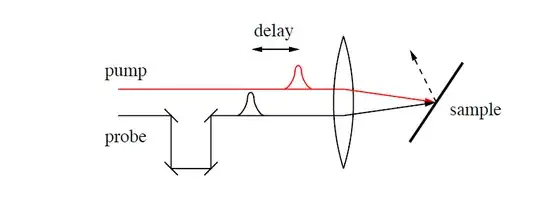Pump-probe spectroscopy is a topical issue in spectroscopy research at the moment: if you Google "Pump-probe spectroscopy" then you will find a description of many research groups and their work.
The purpose of the second beam and the information it can retrieve is very varied and broad. The basic principle is:
- The pump beam drives the sample into an excited state;
- The excitation changes the samples' optical properties;
- The optical properties in question evolve with time as the sample relaxes back to its ground state;
- The probe pulse of a given delay measures the optical property in question;
- By repeating the process whilst varying the delay, one can measure how the optical properties evolve with time throughout the relaxation.
The evolution with time has many applications: we might want to research the dynamics of a known substance, or we might use the procedure to seek known evolutions with time and thus identify the sample's makeup.
So, for example, one might set up an experiment where the probe beam measures the sample's transmittance. Or, in an alternative kind of spectrometer, the probe beam might be one arm of an interferometer, and we thus measure the phase delay and its evolution with time.
